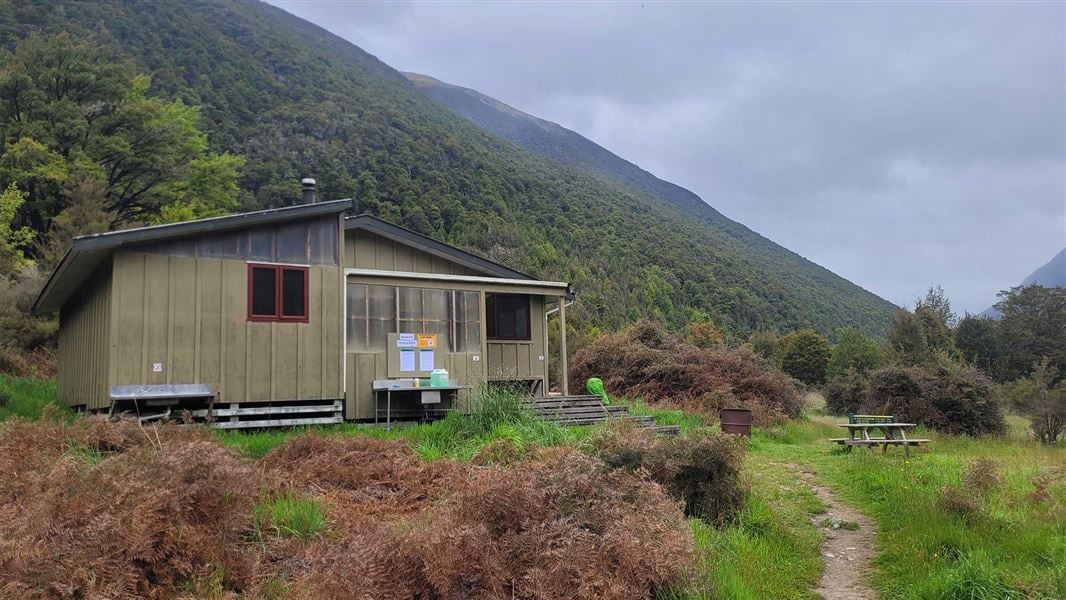Archived content: This media release was accurate on the date of publication.
Date: 09 January 2024
The microscopic algae lindavia and didymo, which can produce snot-like blooms, are in the national park’s lakes Rotoiti and Rotoroa, and in Lake Tennyson on the park’s eastern edge. The algae are also in some Tasman and Marlborough rivers.
The Department of Conservation is calling on people to Check, Clean, Dry gear that has come into contact with freshwater before using it in other lakes and waterways to avoid spreading the algae and other aquatic pests in Nelson Lakes and in other areas.
People making trips into Nelson Lakes National Park are asked to clean gear that is wet or damp from any river or lake water at the cleaning stations near the main access points at Coldwater, Lakehead and Sabine huts.
“Gear needs to be soaked for just 10 minutes in the 10% detergent solution at the cleaning stations to kill the microscopic algae,” says Melissa Griffin, DOC Nelson Lakes Senior Biodiversity Ranger.
“If gear has been dry for at least 48 hours and is bone dry, it is safe to use, but not if dry for less time. For example, if people have swum in Lakes Rotoiti or Rotoroa one day and they plan to swim elsewhere the next day, their togs should be treated with the detergent solution even if dry.”
Lindavia can cause a sticky mucus-like substance known as ‘lake snow’ that hangs below the water surface. Didymo, also known as ‘rock snot’, can form large, unsightly mats on the bottom of lakes, rivers, and streams.
For the third summer, there will be hut wardens at Blue Lake Hut to speak with trampers about preventing the spread of the algae and other aquatic pests in Nelson Lakes.
The hut wardens will also talk about respecting the sacredness of Rotomairewhenua/Blue Lake, and Rotopōhueroa/Lake Constance which are tapu/sacred to mana whenua iwi, particularly to Ngāti Apa ki te Rā Tō. People are asked not to touch the water in these lakes or to swim in them to uphold their mauri/life force and pureness.
Kylie Batt, who is of Ngāti Apa ki te Rā Tō, is back as Blue Lake hut warden from late December to March, having been in the role two summers ago. Volunteers will fill in when Kylie is taking a break.
“People shouldn’t wash or put anything in the lakes, including not filling drink bottles. This will also help protect the outstanding water clarity of Rotomairewhenua, which is the clearest freshwater reported in the world,” says Melissa Griffin.
“As lindavia and didymo are microscopic they are hard to detect unless multiplied in a bloom. When they’re not blooming, people won’t know if it’s on their clothing or gear which is why it’s so important to check, clean and dry all items that have been in freshwater before using them in another waterway or waterbody.”
Background information
- Lindavia was brought into New Zealand accidentally and is in a few lakes in Otago, Canterbury and Waikato. In the upper South Island, it was identified in the Buller River in 2019 and then in Lakes Rotoiti and Rotoroa. It is also in Lake Tennyson in Molesworth Recreation Reserve and Nelson’s Maitai reservoir.
- Lake snow hangs under the water and can be a nuisance by sticking to fishing gear, boats, motors, and people. Lindavia isn’t toxic to humans or livestock and poses no risk from food sourced from the lakes.
- Only small amounts of lake snow have been seen in the Rotoiti and Rotoroa lakes to date, with lindavia having been in the lakes a relatively short time.
- Didymo blooms can interfere with angling, sporting and recreational activities, and block water intakes.
- NIWA testing found the water clarity at Rotomairewhenua/Blue Lake is the highest for freshwater in the world, with 70-80-metres visibility – close to optically pure.
Contact
For media enquiries contact:
Email: media@doc.govt.nz
